Scaly leg mites (Knemidocoptes mutans) are microscopic insects that live underneath the scales on a chicken’s lower legs and feet. They dig tiny tunnels underneath the skin, eat the tissue and deposit crud in their wake. The result is thick, scabby, crusty-looking feet and legs. The longer the mites reside under the chicken’s leg scales, the more discomfort and damage they inflict; an unchecked infestation can result in pain, deformities, lameness and loss of toes.
Scaly leg mites spread from bird to bird in a flock, therefore when one bird is infected, all should be treated. As always when external parasites are found in a flock, the coop should be thoroughly cleaned.
TREATMENT OPTIONS
OPTION 1: Soak, Oil, Vaseline
1) soak the feet and legs in warm water
2) dry with a towel, gently exfoliating any dead, loose scales.
3) dip feet and legs in oil, (linseed, mineral, olive, vegetable) which suffocates the mites.
4) wipe off linseed oil and slather affected area with petroleum jelly.
The petroleum jelly should be re-applied several times each week until the affected areas return to normal. It may take several months for mild to moderate cases to resolve.
OPTION 2: Sulfur & Vaseline
An alternate treatment option for scaly leg mites is to mix 2 tablespoons of sulfur powder with ½ cup petroleum jelly- applied daily for a minimum of two weeks.
OPTION 3: Ivermectin
In severe cases of scaly leg mite, oral or injectable forms of Ivermectin may be prescribed by a veterinarian. Per Dr. Julie Gauthier, DVM the dosage is 0.2 mg/kg per bird, repeated in ten days. Gail Damerow indicates an oral dosage of Ivermectin of 5-7 drops for bantam birds, 1/4 cc for larger birds in The Chicken Health Handbook. She also states that “since the withdrawal time is not known, Ivermectin should not be used on birds kept for meat or eggs.” I do not recommend this medication for backyard chickens. It is extremely easy to overdose and kill chickens with Ivermectin.
OPTION 4: Gasoline & A&D ointment (Obviously, do not use this method if the skin is cut, cracked, or lacerated.)
This method is recommended by Dr. Michael Darre, PhD, Poultry Extension Specialist for New England at the University of Connecticut. It is effective and works quickly. This is the method I would use on my chickens if necessary.
Day 1: DIP the affected legs in gasoline (the cheap gas, no need for hi-test). Don’t rub on or brush on, DIP the legs in it. Hold the legs out and allow them to dry. Slather legs with A&D ointment. The A&D softens the scales and promotes healing.
The gas gets up underneath the scales and kills the mites AND suffocates the nits. The nits are the biggest problem when trying to treat scaly leg mites with other treatment options. It can take weeks with other methods and often doesn’t kill all the nits, so the problem never goes away.
Day 2: Slather A&D ointment on the legs only- no gasoline on day 2.
Day 3: Repeat the same treatment as Day 1. Gas dip. Dry. A&D. That completes the course of treatment.
Scaly leg mites on a feral rooster in Key West.
Healthy leg scales.
Healthy leg scales and toes.
Kathy Shea Mormino
Affectionately known internationally as The Chicken Chick®, Kathy Shea Mormino shares a fun-loving, informative style to raising backyard chickens. …Read on




shop my SPONSORS
Scaly leg mites (Knemidocoptes mutans) are microscopic insects that live underneath the scales on a chicken’s lower legs and feet. They dig tiny tunnels underneath the skin, eat the tissue and deposit crud in their wake. The result is thick, scabby, crusty-looking feet and legs. The longer the mites reside under the chicken’s leg scales, the more discomfort and damage they inflict; an unchecked infestation can result in pain, deformities, lameness and loss of toes.
Scaly leg mites spread from bird to bird in a flock, therefore when one bird is infected, all should be treated. As always when external parasites are found in a flock, the coop should be thoroughly cleaned.
TREATMENT OPTIONS
OPTION 1: Soak, Oil, Vaseline
1) soak the feet and legs in warm water
2) dry with a towel, gently exfoliating any dead, loose scales.
3) dip feet and legs in oil, (linseed, mineral, olive, vegetable) which suffocates the mites.
4) wipe off linseed oil and slather affected area with petroleum jelly.
The petroleum jelly should be re-applied several times each week until the affected areas return to normal. It may take several months for mild to moderate cases to resolve.
OPTION 2: Sulfur & Vaseline
An alternate treatment option for scaly leg mites is to mix 2 tablespoons of sulfur powder with ½ cup petroleum jelly- applied daily for a minimum of two weeks.
OPTION 3: Ivermectin
In severe cases of scaly leg mite, oral or injectable forms of Ivermectin may be prescribed by a veterinarian. Per Dr. Julie Gauthier, DVM the dosage is 0.2 mg/kg per bird, repeated in ten days. Gail Damerow indicates an oral dosage of Ivermectin of 5-7 drops for bantam birds, 1/4 cc for larger birds in The Chicken Health Handbook. She also states that “since the withdrawal time is not known, Ivermectin should not be used on birds kept for meat or eggs.” I do not recommend this medication for backyard chickens. It is extremely easy to overdose and kill chickens with Ivermectin.
OPTION 4: Gasoline & A&D ointment (Obviously, do not use this method if the skin is cut, cracked, or lacerated.)
This method is recommended by Dr. Michael Darre, PhD, Poultry Extension Specialist for New England at the University of Connecticut. It is effective and works quickly. This is the method I would use on my chickens if necessary.
Day 1: DIP the affected legs in gasoline (the cheap gas, no need for hi-test). Don’t rub on or brush on, DIP the legs in it. Hold the legs out and allow them to dry. Slather legs with A&D ointment. The A&D softens the scales and promotes healing.
The gas gets up underneath the scales and kills the mites AND suffocates the nits. The nits are the biggest problem when trying to treat scaly leg mites with other treatment options. It can take weeks with other methods and often doesn’t kill all the nits, so the problem never goes away.
Day 2: Slather A&D ointment on the legs only- no gasoline on day 2.
Day 3: Repeat the same treatment as Day 1. Gas dip. Dry. A&D. That completes the course of treatment.
Scaly leg mites on a feral rooster in Key West.
Healthy leg scales.
Healthy leg scales and toes.



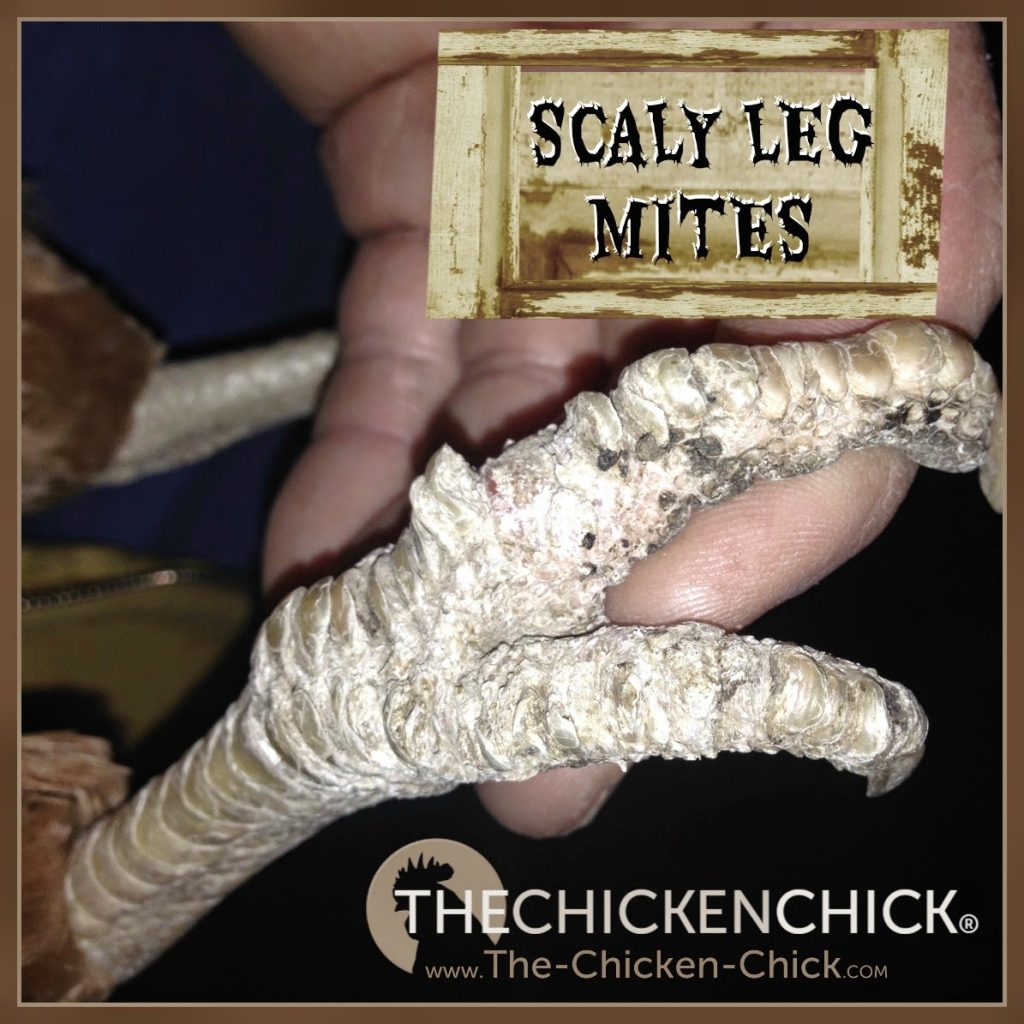
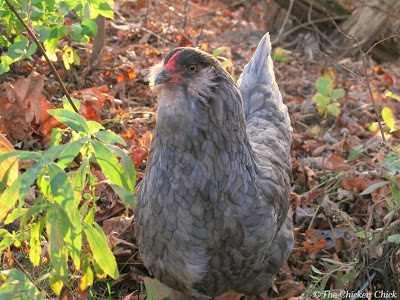
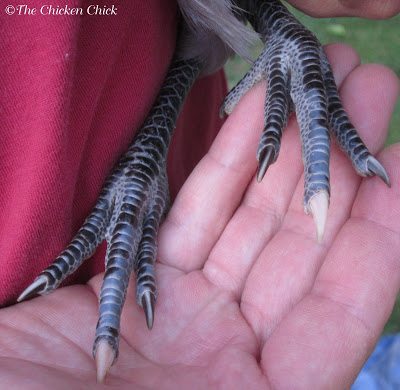
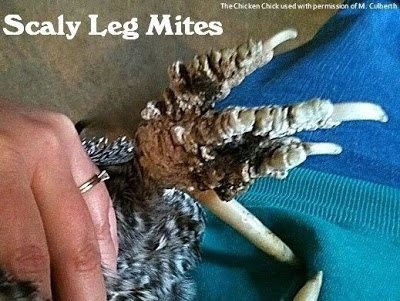
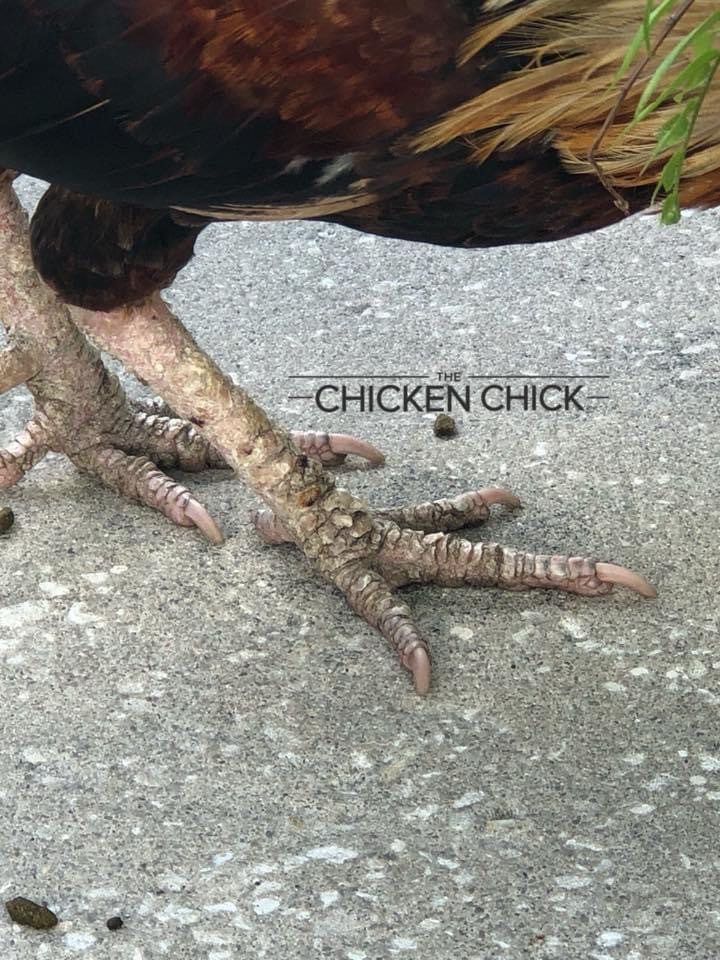
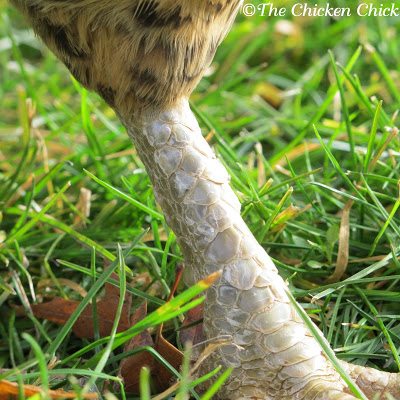
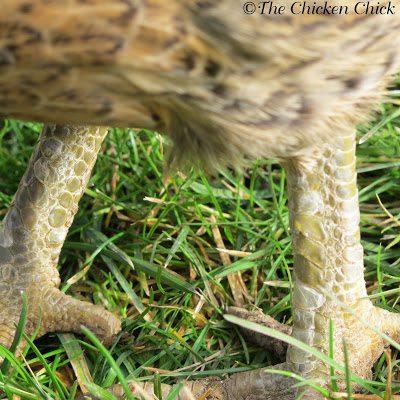















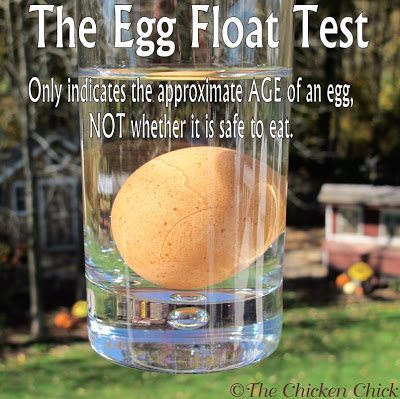










Thanks for this post and information. I started #4 today but will have to finish tonight as they caught on after about the third one! My question is how long should I leave their feet in the gas? Should it be like a quick in and out or leave for a bit?
Just a dip in and out.
Hi Kathy,
I have read your articles on Mites and scaley leg mites.. I think our Roo has both. He seems miserable and is having trouble walking around. He sleeps on the floor now and will not roost.
Should we try both methods on his feathers and the gasoline on his legs ? His feet are swollen and red between the toes, and the shank just above his leg is red and inflamed with missing feathers. His beautiful plume is no longer and he has a red bottom.
appreciate the feed back.
Do you see mites on him?
Do we know if I need to treat the chicken coop with anything after doing the gas dipping treatment? Can I use Vaseline instead of the recommended A&D DIAPER CREAM. We can’t buy that here in BC. Thank you
Yes, you can use Vaseline instead.
I appreciate all of the articles on your website. I have learned so much.
This poetical article says to use gasoline to kill mites and their eggs. My hen just hatched out one chick. Is the gasoline treatment okay for the baby to be around? Is there a way to treat mamma chicken without hurting her chick.?
Thanks again for your knowledge and your willingness to share.
I don’t recommend treating the hen until she is no longer caring for the chick.
I splurged for Elector PSP to handle lice (worked awesome, by the way) and have a lot left over. Can I also use it to treat scaly leg mites by dipping the legs in the mixed solution? Has anyone tried this to see if it works?
No, it does not work on scaly leg mites.
Thanks, I’ll go ahead with the recommended treatment tonight.